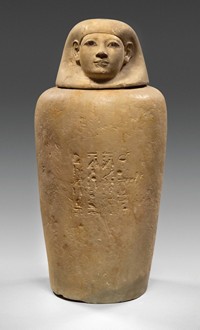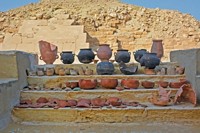Advertisement
Grab your lab coat. Let's get started
Welcome!
Welcome!
Create an account below to get 6 C&EN articles per month, receive newsletters and more - all free.
It seems this is your first time logging in online. Please enter the following information to continue.
As an ACS member you automatically get access to this site. All we need is few more details to create your reading experience.
Not you? Sign in with a different account.
Not you? Sign in with a different account.
ERROR 1
ERROR 1
ERROR 2
ERROR 2
ERROR 2
ERROR 2
ERROR 2
Password and Confirm password must match.
If you have an ACS member number, please enter it here so we can link this account to your membership. (optional)
ERROR 2
ACS values your privacy. By submitting your information, you are gaining access to C&EN and subscribing to our weekly newsletter. We use the information you provide to make your reading experience better, and we will never sell your data to third party members.
Materials
Mummification Balm Recipe Significantly Predates Pharaohs
Analysis of Stone Age Egyptian burial wrappings identifies chemical components of tissue-preserving resin
by Carmen Drahl
August 25, 2014
| A version of this story appeared in
Volume 92, Issue 34
Mummification may forever be linked with famous Egyptian pharaohs such as King Tut, but a study shows that Nile Valley dwellers developed a basic embalming recipe long before the first great kings. An analysis of prehistoric funeral wrappings using gas chromatography/mass spectrometry techniques pushes back the earliest known use of embalming resins more than 1,500 years to roughly 6,200 years ago. Scholars once assumed that burials prior to Egypt’s Old Kingdom some 4,500 years ago were preserved by the desert climate. But some Egyptologists, including Jana Jones of Australia’s Macquarie University, noticed toffeelike resins on Stone Age funerary linens and guessed there was more to the story. Stephen A. Buckley of the University of York, in England, working with Jones and colleagues to analyze the materials, found a complex mixture rich in diterpenoids indicative of pine resin, which is known to have tissue-preserving properties (PLOS One 2014, DOI: 10.1371/journal.pone.0103608). The mixture’s intricacy means that the resin was deliberately prepared, Buckley says.





Join the conversation
Contact the reporter
Submit a Letter to the Editor for publication
Engage with us on Twitter